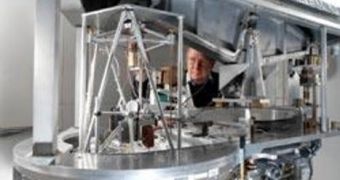Establishing the actual properties of a kilogram is a very complex task, and the entire world has only two instruments capable of doing this, called watt balances. They are able to redefine the kilogram more sensitively, comparable to how an atomic clock shows precisely the duration of a second in terms of cesium atom vibrations. One of these devices is now en route from England to Canada, where it is to be reassembled and used by metrologists, Nature News reports.
These extremely sensitive instruments are prone to suffering damage caused by such a trip, so the entire international community is holding its breath in anticipation of the ocean crossing. “Taking it all apart, shipping it, putting it back together — the worrisome thing is that something will break. It's very fragile, and a lot of it is pretty old,” Richard Steiner says. He is part of the science team that operates the other watt balance, currently located at the National Institute for Standards and Technology (NIST), in Gaithersburg, the United States.
While UK researchers are saddened by the fact that they have relinquished operational control over the instrument, on the other side of the Atlantic, in Canada, spirits are high, and researchers are ecstatic. They hope to be able to start using the watt balance as soon as possible after its arrival. The kilogram limit-related investigations are very important, because this is the only remaining unit of measurement that is still defined by a solid object – a platinum-iridium brick, held in a vault near Paris. With the passing of time, atoms continuously accrete or fall off the lump, so its mass is constantly changing.
Metrologists around the world are hoping to use the watt balances to express the weight of a kilogram depending on Planck's constant, a universal formula that explains the correlation between the energy and frequency of light. By using equations of quantum physics and electromagnetism, the constant can be related to mass, which would essentially offer a way of determining the actual weight of a kilogram without any dependencies on actual objects (from an objective frame of reference).

 14 DAY TRIAL //
14 DAY TRIAL //